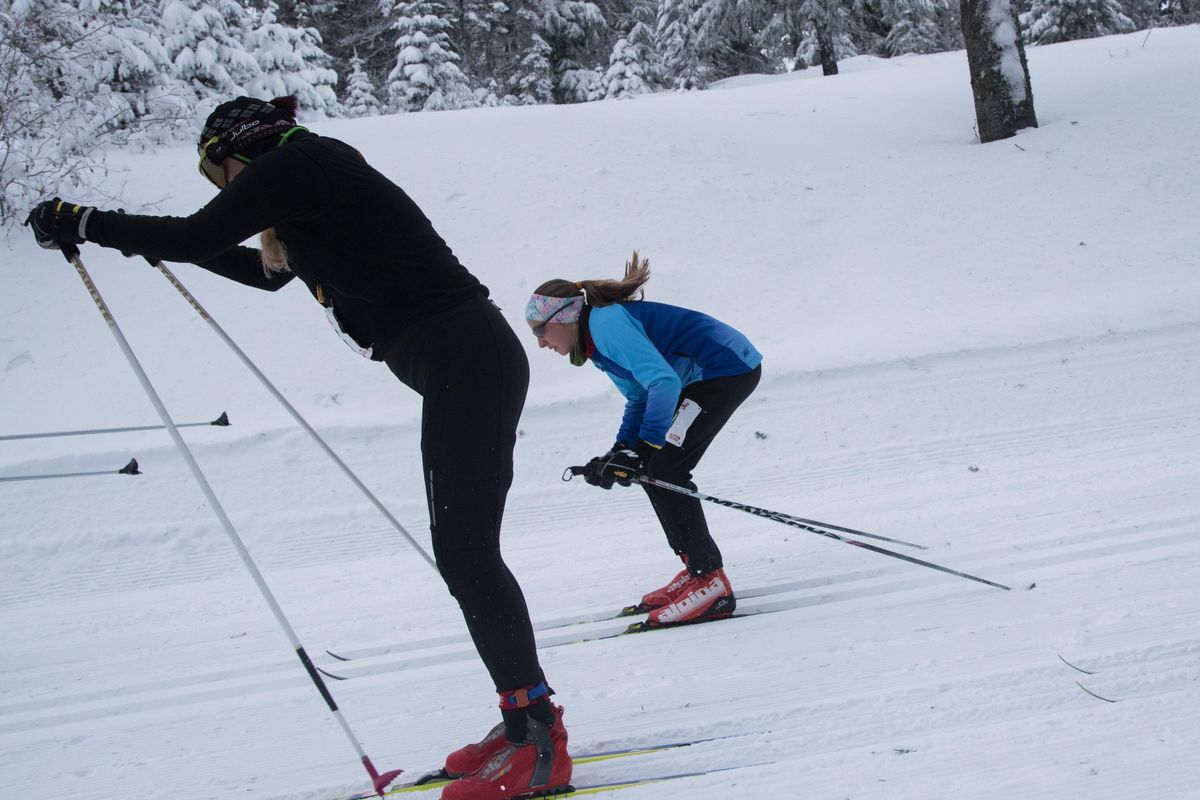Region’s premier cross-country ski race, Spokane Langlauf, turning 40

In one week, the region’s premier cross-country skiing race, Spokane Langlauf, will turn 40.
Conceived as Bloomsday on snow, the 10k classic skiing race has a storied history. Started in 1980, it was the brainchild of two elite athletes looking for close-to-home competition, while also introducing others to the sport.
“I was having a blast going to other events and we just thought we should do this here and get others involved,” said co-founder Tim Ray.
That included introducing many to the idea of groomed trails, which make the sport faster and smoother.
“For the most part cross-country skiing was just going off in the woods (at that time),” Ray said. “It was more like sliding in snowshoes.”
So Ray and his good friend Kim Momb organized the first Langlauf race at Achilles Ranch near Sacheen Lake. It came together a bit haphazardly, with Ray spraying orange paint on snowbanks to direct people to the race.
Two hundred people signed up for that first race, according to Cris Currie’s book “Spokane’s History of Skiing.”
“With a $5 entry fee and $200 in prizes, the race was considered successful enough to keep doing,” writes Currie. “But fickle snow conditions would cause frequent postponements and cancellations in years to come.”
Several races in the early ’80s had to be postponed for weeks. These Langlaufs were two-day events with various race distances from 5K to 20K for men and women.
For the next decade organizers did their best with the intermittent snow. At the same time sponsors made it possible for organizers to give away more and more prizes, one reason the race continued to grow in popularity. In 1988, the nonprofit Langlauf Association was formed. In 1990, the race moved to Mount Spokane with its more consistent snow pack and newly constructed Nordic skiing center. Plus, 17 kilometers of ski trails had been cleared, a plowed Sno-Park area had been built and a $55,000 grooming machine was secured through Washington Parks and Recreation Commission.

In 1992, the popular Woodies and Woolies competition started. Woodies and Woolies competitors must complete the race on wooden skis while wearing all natural clothing. That same year, 360 skiers crossed the finish line – a record – reports Currie.
New technology – including specialty waxes for skis – led to faster and faster finishing times. In 1993, Brian Erickson, then 17, finished in 26:43, a course record.
Since then participation has ebbed and flowed. Last year, for instance, 220 people finished the race. Overall participation has dropped, though it remains a popular event.
“I think at our hey day we were really close to 400 people,” Ray said.
Still, the race has remained popular. The one age class that has suffered is the 30-to-45-year-old, Ray said, though that may be changing.
“You’re starting to see a resurgence in that,” he said. “The lower 30s people are coming up and enjoying it.”
Food, drink and prizes make the post-event festivities all the merrier. And, like Bloomsday, it’s a family-friendly affair featuring elite athletes on the same course as bumbling newbies.
“I think more than anything it’s a celebration of winter and being outside and enjoying the sport of cross-country skiing,” Ray said. “That’s why we do the prizes the way we do. The best prizes don’t go to the person who finishes first. Someone who finished last could walk away with a brand new set of skis, or an overnight stay and trail pass to the Methow.”